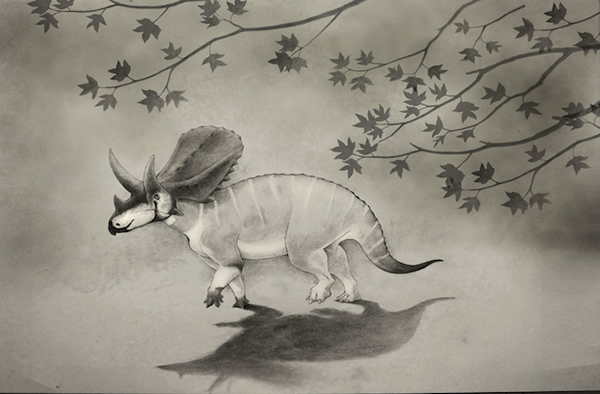Badass Triceratops Cousin Sported Hoodie
Badass Triceratops Cousin Sported Hoodie
The earliest known cousin of Triceratops was Judiceratops, a newly identified dinosaur that sported a hoodie-like growth on the back of its head.
The “hoodie” even exhibited a designer touch, since it had large triangular scallops on its edge in the front, with the scallops becoming low and blunt toward the back. Many horned, plant-eating dinosaurs possessed the growths, but the one on Judiceratops was particularly large and distinctive.
“These are very bold, conspicuous display structures,” said Yale researcher Nicholas Longrich in a press release. Longrich analyzed the dinosaur’s remains and identified it as a new species. He explained that the ornate protrusion might have been used to attract mates and intimidate rivals.
Judiceratops tigris, described in the latest edition of the Bulletin of the Peabody Museum of Natural History, was unearthed a while back by Princeton researchers in north central Montana.
This all-American dino lived 78 million years ago. It’s the earliest known member of the chasmosaurines, a group of horned dinosaurs known for their natural head décor.
Judiceratops possessed two large horns over its brow and a smaller horn on its nose. It appears to have spent much of its days peacefully feeding on low-growing vegetation, although one wonders if the horns rammed into something or someone every now and then.
The new dino is one of at least 18 closely related species in and around the Montana region. It’s expected that more such dinosaurs will be found there in future.
“We keep finding new species, because cerotopsids — horned dinosaurs — evolved so rapidly,” explained Longrich. “These species show up for just a couple million years, or even a far shorter time, before another species replaces it. As you move up into younger rocks or down into older rocks, you get new species and no longer see the old ones. There was a lot of turnover.”
That must mean the environment there changed a lot over the years, with the dinosaurs evolving in response to the changes.
As for the name Judiceratops tigris, it refers to the site where the fossils were found — in the Judith River Formation of Hill County, Mont. — and to the Greek words “ceras” (horn) and “ops” (face).
Tigris is a nod to the Princeton researchers who originally found the fossils and eventually gave them to the Peabody Museum at Yale.(May 29, 2013 04:54 PM ET // by Jennifer Viegas)












